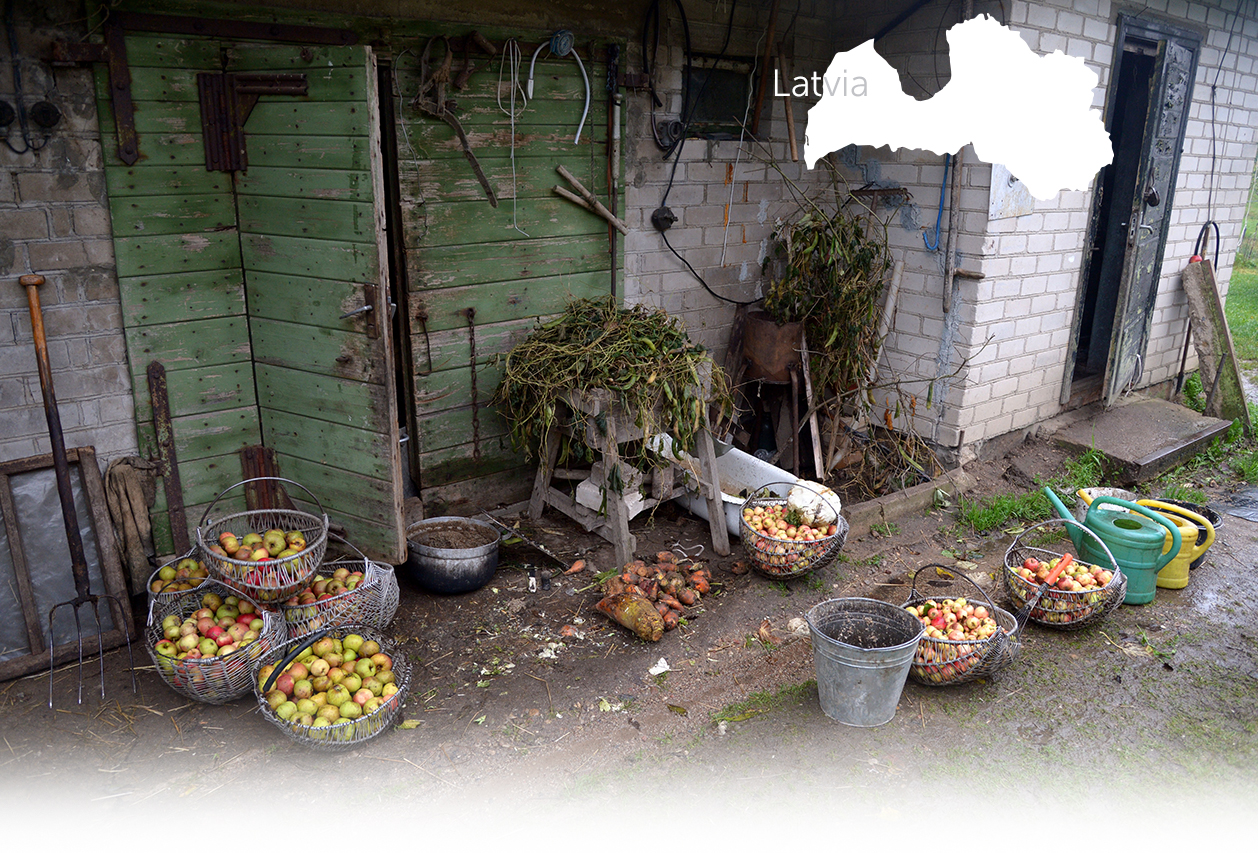

2 Sitio(s) de ejecución
Oziliņš Ģ., born in 1935: "I saw a group of 12 or 13 Jews being taken to the killing site in carts. They were escorted by guards. There were no women or children among them, only men. I recognized a tailor who had made my trousers. He was sitting in one of the wooden carts with his sewing machine. Other Jews also had various tools and work instruments with them. I think they brought their tools because they had been told they were being taken somewhere to work. My grandmother, who also witnessed the scene, immediately understood what was really going to happen. Later, I learned that these Jewish men had been shot 3 or 4 km from my home, in a sort of quarry where the inhabitants used to collect sand and stones for road repairs. The killing site was located about 20 meters from the road. It was considered suitable for the shooting because there was no need to dig a pit there. Villagers said that some of the victims were still alive when they were buried. A man from Nereta later returned with the sewing machine that had belonged to the Jewish tailor." (Testimony N°YIU158LV, interviewed in Nereta, on September 29, 2022)
"According to witnesses’ statements [...], in July, August and September 1941, German fascists and their accomplices […] arrested and shot approximately 200 Soviet citizens, who were buried in four pits [located in]: "Pilkalne", "Smilsu iela", "Paupery", "Smilsu". [...] During the Nazi occupation, German executioners killed 188 people in the aforementioned locations: these were entire families, including women and children, of Soviet citizens from the Nereta volost, including the Beitlers, the Schwartzs, the Rozentals, the Jacobsons and other Soviet citizens of Latvian, Jewish and Russian nationality. [...]" [Act drawn by State Extraordinary Soviet Commission (ChGK), on January 20, 1945, pp.338-339; GARF 7021-93-2402/Copy USHMM RG.22-002M]
Nereta is a village in Aizkraukle Municipality in the Selonia region of Latvia, located near the Lithuanian border. It is situated approximately 60 km (37.2 mi) southwest of Jēkabpils. The village was first mentioned in written sources in 1298.
In 1925, 62 Jewish residents were recorded as living in Nereta and its vicinity. By 1930, this number had increased to 70. According to the 1935 census, there were 54 Jews living in the village, comprising 8.8% of the total population.
The Jewish community of Nereta was primarily engaged in commerce, handicrafts, and the service sector, while some earned their living through agriculture. Moses Jacobson operated a store selling radios and hardware; Samuil Jacobson sold leather; Itzik Meyer Jacobson imported goods for resale; and Schwartz was involved in the jewelry trade. The Nadel family sold leather products, while Liba Meilach and V. Mushkat traded in clothing. Pinka Rosenthal managed the pharmacy, and Nora Jacobson and Ida Beitler worked as dentists. Jewish craftsmen also offered services as tinsmiths, tailors, and cobblers.
The exact number of Jewish residents who remained in Nereta on the eve of the Second World War is unknown, but according to eyewitnesses interviewed by Yahad, numerous Jewish families were still living in the village at that time.
Nereta was occupied by German troops in late June or early July 1941. According to some sources, 82 Jews perished in Nereta during the German occupation, while Soviet archives state that 188 people of different nationalities were killed there, including 98 Jews.
The exact dates of the massacres of the Jewish residents remain unknown, but most of the victims were murdered within the first few months of the occupation. According to sources, a number of Jews were killed in early July 1941 at the gravel pits near the Ilza (Ķišķi) Graveyard. A local witness interviewed by Yahad saw a group of 12–13 Jewish craftsmen being transported there in carts, under the supervision of armed guards. Presumably, the victims were taken under the pretext of forced labor, as they carried their working tools with them.
Another major killing site is located at the nearby Pilkalne manor, approximately 4 km from Nereta. Jewish families from Nereta, including adults and children, along with several Soviet activists, were rounded up and imprisoned in a barn at the Pilkalne estate. According to a local witness interviewed by Yahad, the Jews realized they would be executed while being marched to the manor, as they were seen discarding their valuables along the way. In early August 1941, the imprisoned Jews were shot through the barn windows by members of the Nereta Self-Defense squad and buried in a pit previously dug on the site.
According to some sources, a total of 100 people were shot at the manor estate, including 40 Jews, while Soviet archives report that 29 Soviet activists were murdered there. At least one Jewish man, a member of the Jacobson family, managed to escape from the manor and survive the war. According to the Yahad witness, two other Jews who survived the initial Pilkalne massacre were later captured and shot alongside Soviet activists on June 22, 1942.
The Jewish family of Zadowitsch from Nereta was killed separately at the Čigānu hill.
Following the destruction of the Jewish community in Nereta, the victims' belongings were sold at an auction organized by the perpetrators.
After the war, most of the victims’ remains were exhumed and reburied in the Jēkabpils Old Jewish Cemetery, where a monument was erected. Four victims—two Beitlers and two Nadels—were reburied in the Smiltaine Graveyard alongside Soviet activists.
¿Tiene información adicional con respecto a un pueblo que le gustaría compartir con Yahad?
Por favor contáctenos a contact@yahadinunum.org
o llamando a Yahad – In Unum at +33 (0) 1 53 20 13 17